Riddled with crime, and on the brink of bankruptcy, New York City was a very different place 40 years ago. Unlike most New Yorkers, photographer Langdon Clay spent much of the 1970s walking around Manhattan alone in the middle of the night.
It certainly wasn’t the safest way to spend his time, but “being young and foolish can have its advantages,” Clay told Business Insider.
While roaming the streets, Clay documented the city’s cars, peacefully parked and left for the night, reflecting the neon signs and street lights. Though the photographic focus is on the cars, it’s hard to ignore the fact that there are very rarely any other people in the shot. Clay’s new book, “Cars — New York City 1974-1976,” is a collection of photos of a New York City that will probably never be that eerily quiet again.
Clay moved to New York City in 1971. 1,691 murders were reported in the city the following year.
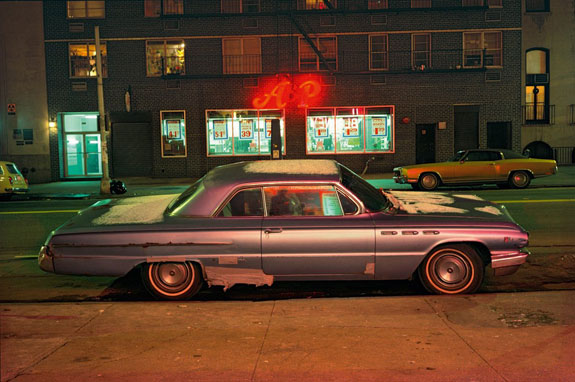
A&P car, Buick LeSabre, 14th Street between 7th and 8th Avenues, 1974. Credit: Langdon Clay. Source: The Village Voice
By 1975, the city had to agree to deep budget cuts to avoid bankruptcy.
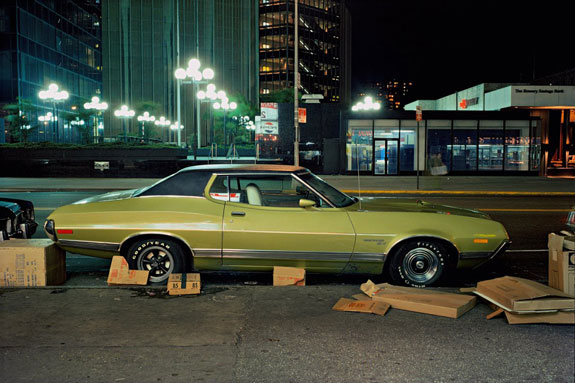
Box car, Gran Torino Sport, in the Twenties or Thirties on the East side, 1975, Credit: Langdon Clay
In those days, the city was “mostly broke,” Clay said. He referenced a New York Daily News headline that read “(President) Ford to City: Drop Dead!” after city officials had gone to Washington “hat in hand.” “But I didn’t notice much of that,” Clay said.
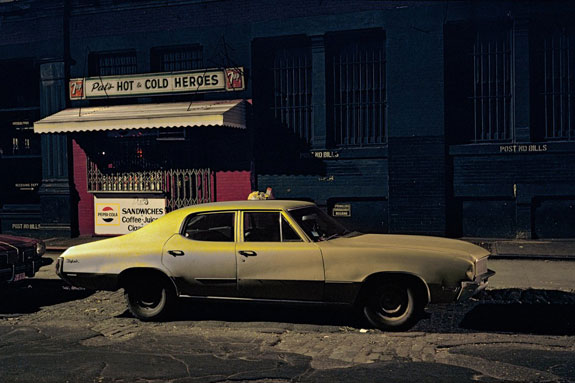
Pat’s Hot and Cold Heroes car, Buick Skylark, Soho, 1976. Credit: Langdon Clay
At only 25, Clay was obsessed with documenting the city’s eerily empty streets at night.
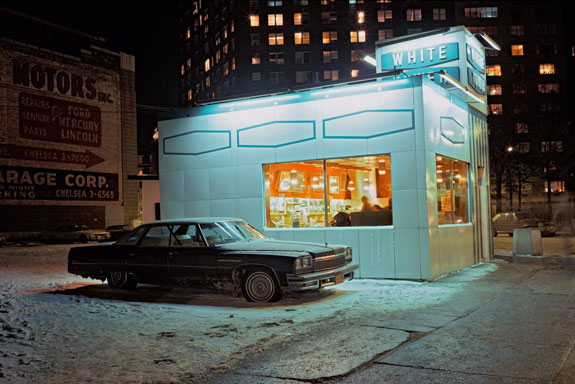
White Tower car, Buick LeSabre, Meatpacking District, 1976. Credit: Langdon Clay
“I had recently switched from black and white [film] to color, and this became the project that really hooked me,” he said.
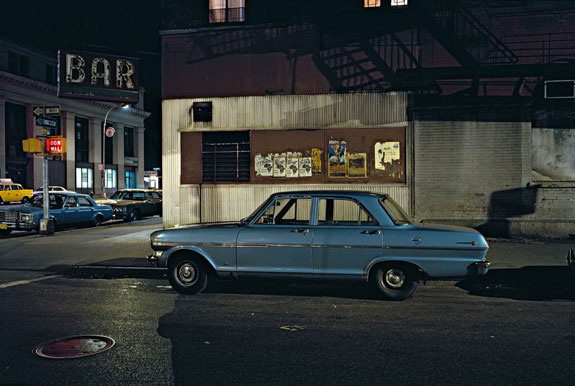
Bar car (anti-apartheid day), Chevrolet Nova, in the Twenties near Avenue of the Americas, 1976 Credit: Langdon Clay
Clay wasn’t afraid to roam the deserted streets. “I took mostly familiar routes,” he said.
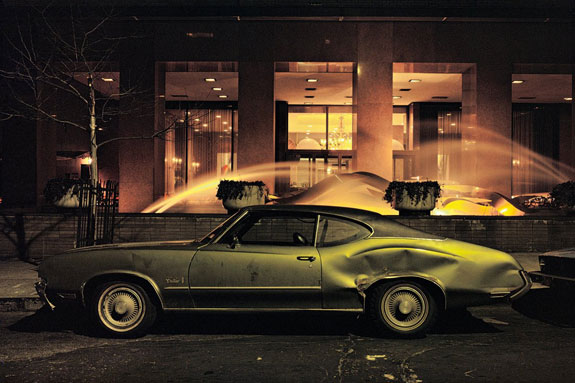
Fountain car, Oldsmobile Cutlass, 1975. Credit: Langdon Clay
Luc Sante, who wrote the foreword to Clay’s book, remembers 1970s New York in a similar way. “I walked around at night in Manhattan a lot in those years, and hardly ever saw anyone else. Was it fear or insularity or television or drugs that shut people in? I couldn’t tell you,” he wrote.
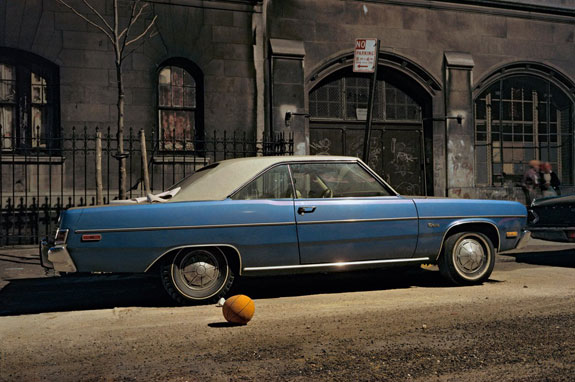
Basketball car, Plymouth Duster, 1974, Credit: Langdon Clay
Clay was careful about which cars he chose to photograph. “There was no perfect car without the perfect background,” he said.
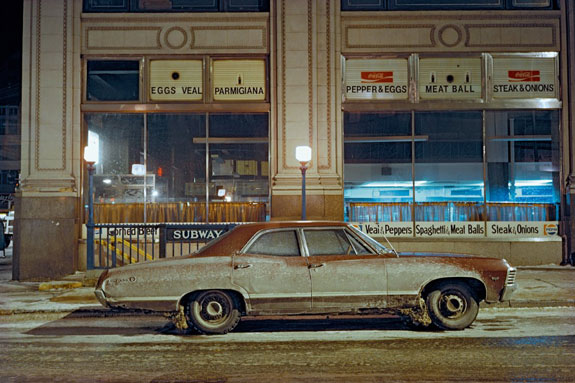
Subway Impala, Chevrolet Impala, 7th Avenue and 29th Street, 1975, Credit: Langdon Clay
“As you can see the cars are not at all perfect. When recording for posterity I think it’s important to focus on what’s there, not what it is others think is ideal,” Clay said. “In time even the most sad-sack subjects can reveal some inner glow.”
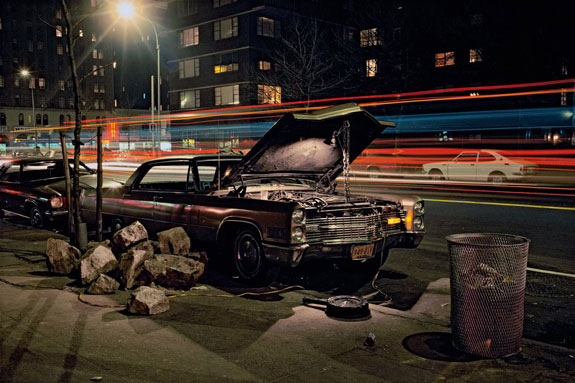
Hard Rock Caddy, Cadillac Near 23rd Street and 8th Avenue, 1975. Credit: Langdon Clay
Sante reflects on how Clay’s work stands apart from other photographs of New York City taken in the 1970s: “Other collections of photographs documenting those years tend to focus on extremes of misery, on infrastructure breakdown, on evanescent outbreaks of colorful behavior that will disproportionately resonate in later decades. Here you see the city as it actually was.”

24 Checker car, Checker Marathon, in the Twenties near 6th Avenue, 1975. Credit: Langdon Clay
